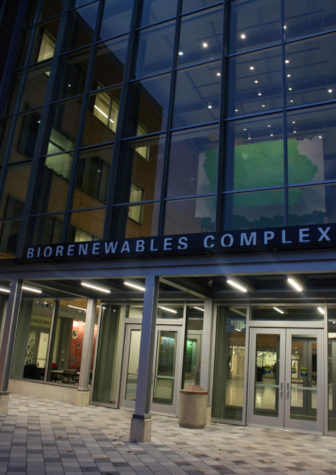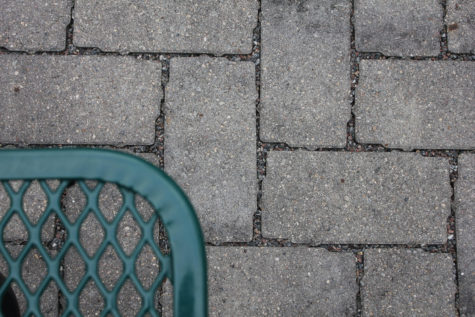A new way to grow: how to make a hydroponics system
March 30, 2012
Hydroponics is the growing of vegetables, fruits or flower crops without the use of soil, instead using a substitute growing medium or just use water. There are a variety of hydroponic systems, varying in difficulty, but the easiest for college life is the deep water culture system. Students wanting to try out their green thumb can follow these directions provided by Nathan Brockman, curator at Reiman Gardens, to make a deep water culture system that is perfect for tomatoes and lettuce.
Materials needed to make the system are: a five gallon food-safe plastic bucket, wood mulch, a sheet of 1 inch thick packing plastic foam, empty individual serving size yogurt containers and an air pump (also used in aquariums, so can be bought at pet stores).
Start by punching holes in the bottom and near the bottom of the yogurt containers. These will hold the plants, so they need a way for the nutrient water to circulate through. Then cut the sheet of plastic foam in a circular shape and just slightly smaller than the circumference of the top of the bucket.
Next, cut circular holes in the newly made foam circle just big enough to hold the top of the yogurt containers in place. Fit the circular sheet of packing foam into the top of the bucket; because the circumference is slightly smaller, the packing foam will be able to partially sink down to stay with the water level.
Pot the plants into the yogurt containers using wood mulch as your substitute soil medium. Put the yogurt containers into the holes of the packing foam lid.
Now for the system to grow a nutrient water solution must be made. Per gallon of tap or rain water, mix 1 tablespoon of Miracle-Gro with micronutrients, 1 teaspoon Epsom salt and one-fourth teaspoon of ground antacid tablets.
The required pH of this solution for vegetable growth is around 6.0 to 7.0. The pH of the nutrient water solution should remain around this, but to be careful pH levels can be tested using simple litmus paper. If pH levels are off, lemon juice (an acid), vinegar (an acid) or baking soda (a base) can be added to the solution to doctor it.
Fill the bucket with this nutrient water to a level that the roots can reach. Plug the air pump into an electrical outlet and then place the pump portion at the bottom of the bucket. If the system is indoors make sure to have low hanging fluorescent lights lighting it. Now let the plants grow to full maturity, and enjoy fresh produce without having to leave your dorm.









